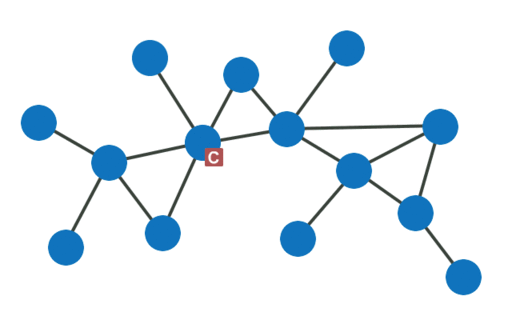Synchronous sleep
The synchronous sleep feature of DigiMesh makes it possible for all nodes in the network to synchronize their sleep and wake times. All synchronized cyclic sleep nodes enter and exit a low power state at the same time, forming a cyclic sleeping network. Nodes synchronize by receiving a special wireless packet called a sync message sent by a node acting as a sleep coordinator. This allows some or all XBee modules in the network to be battery powered.
Synchronous sleep operation
All modules go to sleep at the same time. This forms a cyclic sleeping network where we can define two different device types: sleep coordinator and sleeping router.
![]() Sleep coordinator
Sleep coordinator
A node in the DigiMesh network acts as the sleep coordinator. This device:
- Defines the sleeping parameters for the entire network: sleep and wake times for every cycle.
- Broadcasts a synchronization message at the beginning of each wake period.
- Cannot sleep.
A node in the network can become a coordinator through a nomination and election process.
![]() Sleeping router
Sleeping router
A sleeping router is a full-featured DigiMesh node configured as a low-power device. This device:
- Sleeps for a programmed time.
- Wakes in unison with other nodes.
- Exchanges data and synchronization messages, and then returns to sleep.
- Cannot receive wireless messages or data from the serial interface while asleep.
During normal operations:
- The sleep coordinator sends a synchronization message as a broadcast to all nodes at a beginning of every wake cycle.
- This message contains synchronization information and the wake and sleep times for the current cycle.
- All cyclic sleep nodes (SM = 8) receiving a sync message remains awake for the wake time and then sleep for the specified sleep period.

Synchronous sleep modes
DigiMesh supports two different synchronous sleep modes:
- Synchronous sleep support (SM = 7)
- Synchronous cyclic sleep (SM = 8)
Synchronous sleep support
An XBee in synchronous sleep support mode will synchronize itself with a sleeping network but will not sleep.
At any time, a sleep support node will respond with a sync message to new modules which are attempting to join the sleeping network. It will only transmit normal data when the other nodes in the sleeping network are awake.
Sleep support nodes are especially useful when used as preferred sleep coordinator nodes and as aids in adding new modules to a sleeping network.
You can enable synchronous sleep support by setting the Sleep Mode (SM) parameter to Sleep Support [7].
Because sleep support nodes do not sleep, they should be mains powered.
Synchronous cyclic sleep
An XBee in synchronous cyclic sleep mode sleeps for a programmed time, wakes in unison with other nodes, exchanges data and sync messages, and then returns to sleep. While asleep, it cannot receive wireless or serial data.
You can enable synchronous sleep support by setting the Sleep Mode (SM) parameter to Synchronized Cyclic Sleep [8].
 PDF
PDF


